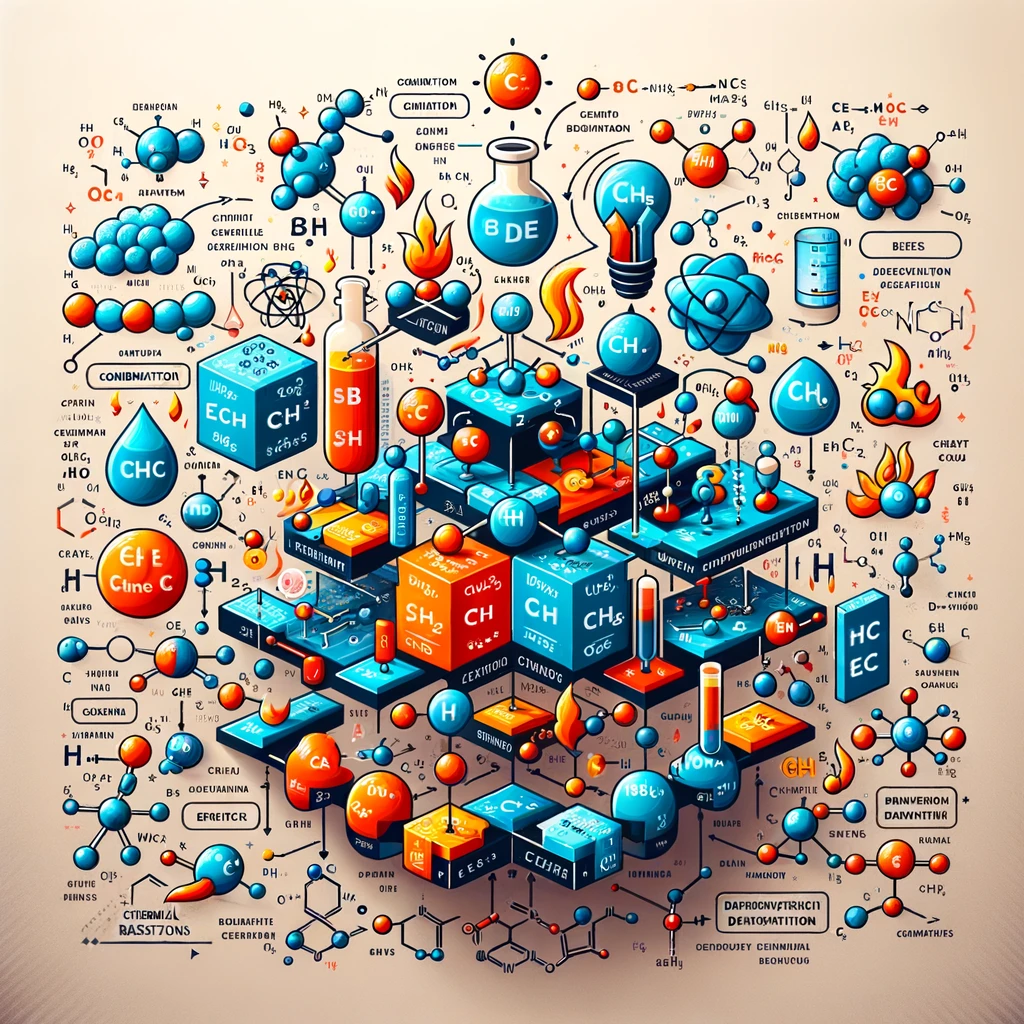
Unlock the Secrets of Chemical Reactions and Equations: A Complete Guide for Class 10

Introduction
Dive into the world of chemistry where substances interact in fascinating ways to form new products. Chemical reactions and equations are at the heart of this transformation, providing a window into the behavior of atoms and molecules. This guide unfolds the mysteries of chemical changes, helping Class 10 students grasp the essentials of balancing equations and understanding reaction types.
Understanding Chemical Reactions
A chemical reaction is a process where reactants transform into products through a chemical change. This transformation is governed by the principles of conservation of mass and energy.
Key Concepts:
- Reactants and Products: The starting materials in a reaction are called reactants, and the substances formed are products.
- Chemical Equation: A symbolic representation of a chemical reaction where reactants are shown on the left, products on the right, and an arrow indicates the direction of the transformation.
Types of Chemical Reactions
Chemical reactions are classified based on the nature of the transformation:
- Combination Reaction: Two or more substances combine to form a single product.
Example: (2H_2 + O_2 \rightarrow 2H_2O) - Decomposition Reaction: A single compound breaks down into two or more simpler products.
Example: (2HgO \rightarrow 2Hg + O_2) - Displacement Reaction: An atom or a group of atoms in a compound is replaced by an atom of another element.
Example: (Zn + CuSO_4 \rightarrow ZnSO_4 + Cu) - Double Displacement Reaction: Ions exchange between two compounds forming new compounds.
Example: (AgNO_3 + NaCl \rightarrow AgCl + NaNO_3) - Combustion Reaction: A substance combines with oxygen, releasing energy in the form of light or heat.
Example: (CH_4 + 2O_2 \rightarrow CO_2 + 2H_2O)
Balancing Chemical Equations
Balancing a chemical equation ensures that the number of atoms for each element is the same on both sides of the equation, adhering to the law of conservation of mass.
Steps to Balance Equations:
- Write the Unbalanced Equation: Identify the reactants and products.
- Count the Atoms: List the number of atoms of each element on both sides.
- Balance the Atoms: Adjust coefficients to get the same number of atoms for each element.
- Check Your Work: Ensure both sides of the equation are balanced.
Conclusion
Understanding chemical reactions and equations is fundamental to mastering chemistry. By recognizing the types of reactions and learning to balance equations, students gain insights into the underlying principles governing chemical processes.
Call to Action
Experiment with simple reactions under supervision, apply the concepts learned to new situations, and practice balancing equations to strengthen your understanding.